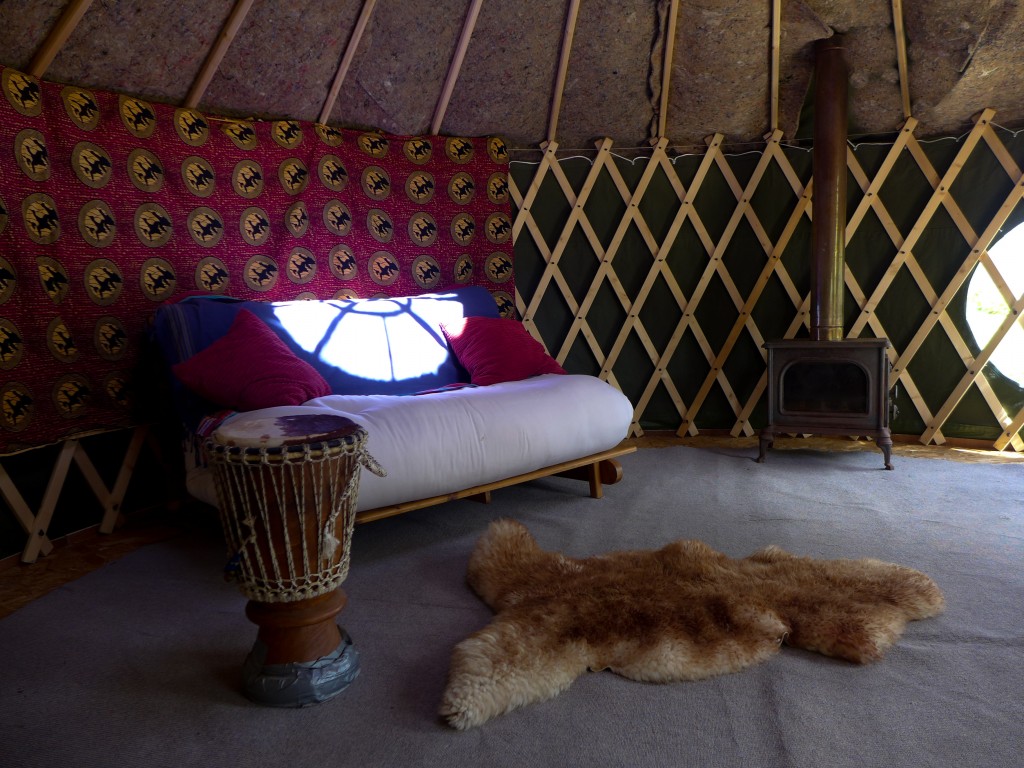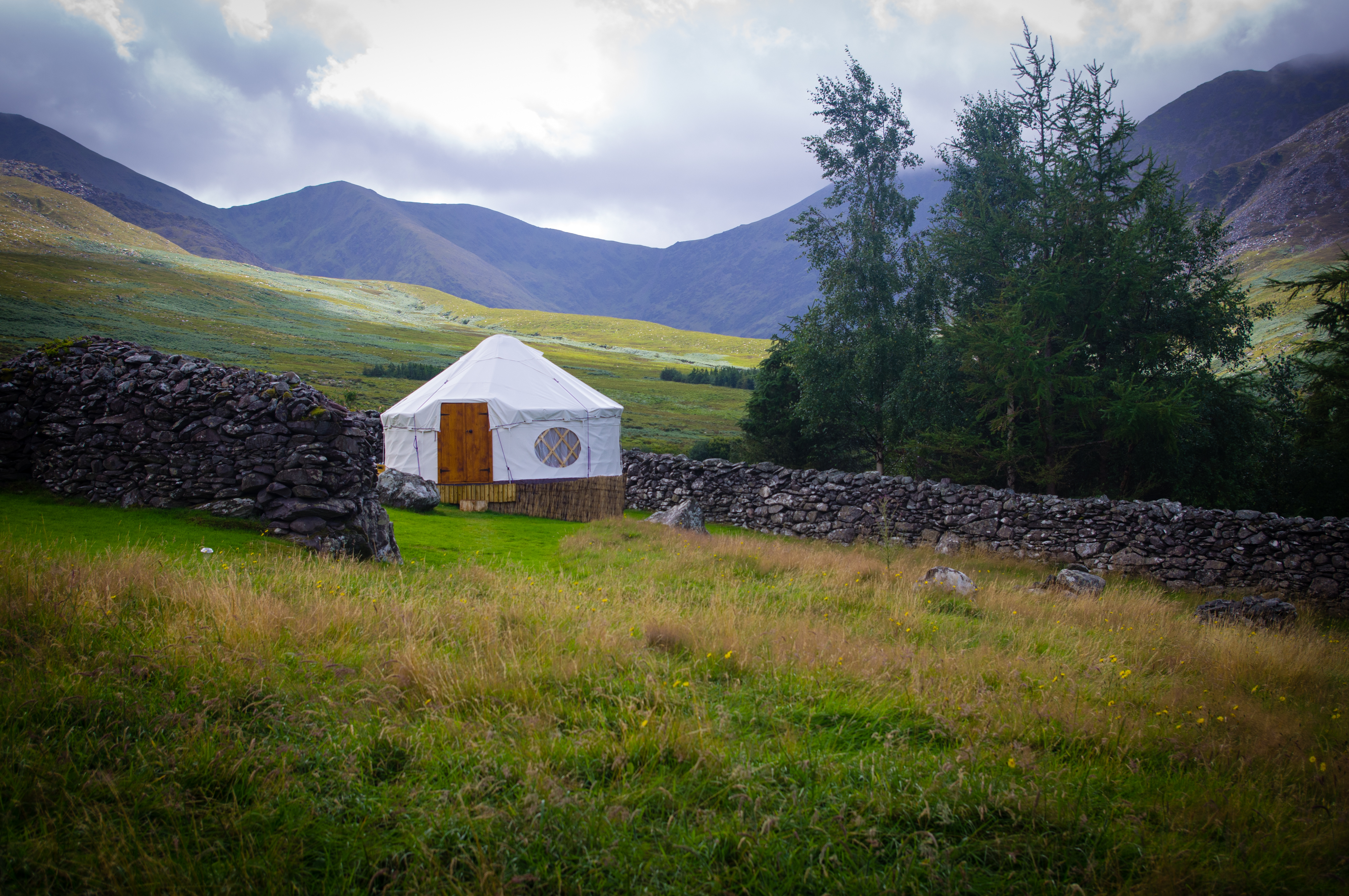I Went Into a Hazel Wood

By Nick Clayson
Tomorrow morning, I am heading to the Burren to collect hazel for a yurt-making workshop to be held later this month. There is something very natural and deeply satisfying in building a shelter. To go to the woods, select and cut sticks, peel bark, measure, shape, make simple connections with cord. To create a special little world in which to dwell and dream.
It is more than keeping the rain off our heads. It is creating and defining space, shaping the world around us. It is an instinctive architectural process. When we lay a towel on the beach we define space in a simple way. True it does keep the sand off our bottoms, but it is more than that and we all know it. The area of architecture I have ended up working in is mobile structures: yurts, tents and simple shelters. I like structures that kiss their surroundings and sit lightly on the ground, move and leave only the vaguest memory behind.
My journey with yurts began many years ago. I became interested in them as a student and years later started making them as a way of enticing my city girl partner into a life of camping. My fascination with these structures and the people who live in them has grown over the years since. Circular structures are beautiful but also demanding, pulling our focus to the centre, democratic, ordered and powerful. In Mongolia there is a strict order to the layout of a Yurt or Ger as it is known. The door always faces south. Atthe north is the Altar. Men are to the west and women in the east, always sleeping with heads to the north. In between, are places for children, guests, visitors and possessions. In a Yurt the whole universe is represented. The roof is the sky or heavens, the crown is the sun – the entrance to the upper world. The walls are the world tree or ladder by which one ascends to the upper world (something which Mongolian Shamen do in a trance state passing through the crown). At the centre is the sacred hearth. It contains the five basic elements: earth, wood, fire, metal in the grate and water in the kettle, on which offerings are burned each morning. In this way the spiritual is a part of the everyday. Circulation is always clockwise, and many other mores and traditions dictate how people interact with one another. It is for example considered very impolite to knock on the door of a Yurt. One should simply enter. To knock is to question a host’s generosity.
Shelter will always be given even to a mortal enemy. Yurts are also extremely practical dwellings. They offer protection from a very harsh environment and are perfectly suited to the lifestyle of nomadic people. It is this combining of the spiritual practice with the everyday which holds my attention. It is something common with all vernacular or traditional housing. In Ireland the long cottage with stone hearth, settle and holy lamp could be seen in the same way. It is these questions about how we dwell and shelter and what we truly need to thrive as people, which should be at the heart of the debate surrounding the current housing situation. It is worth remembering that the word Ger in Mongolian does not actually describe a structure at all but translates simply as home.
Nick Clayson is an Architect, Craftsman and Proprietor of Bigfoot Yurts. facebook.com/bigfootyurts


